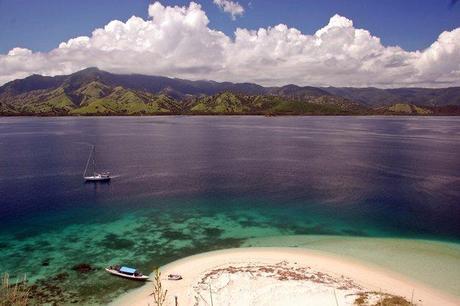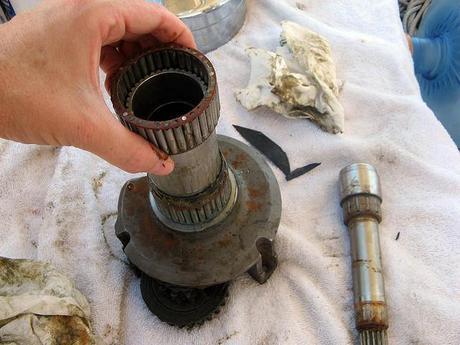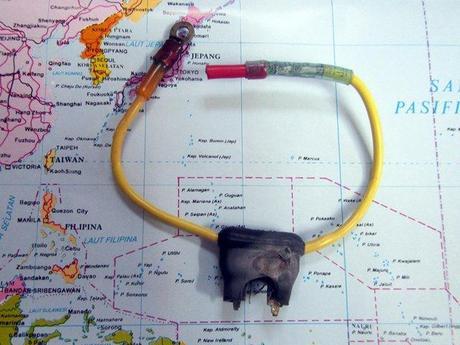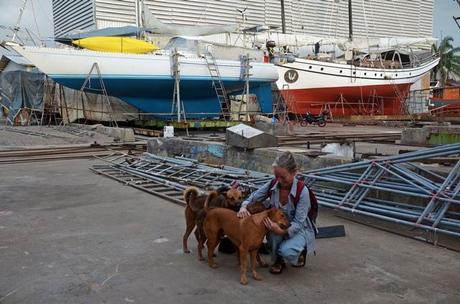
What does it cost to go cruising? Most of these discussions focus on month to month living expenses. Do you eat out in restaurants or stick to the boat? Do you stay in marinas or anchor out? Do you send out your laundry or wash it in a bucket? What’s easy to miss in the discussion, or not apparent in a month-to-month level examination, are maintenance costs. They get lost in the shuffle, but maintenance costs can bite you in the bum.
How can you ballpark annual maintenance costs? There are various “rules of thumb” and most of them put yearly maintenance costs at 10-20% of the boat’s value. It’s extremely problematic to estimate, for a variety of reasons. What is your definition of maintenance (are you including capital expenses or insurance or mooring or repairs or truly only maintenance)? How much can you DIY vs hire out? What country are you in? How gear / equipment intensive is your boat?
Even at the low end of that range, this suggests we should be spending somewhere around US$20,000/year on maintenance. Let me tell you, that is not happening! Our maintenance expenses are a mere shadow of that figure, but we don't consider Totem to be under-maintained. A little scruffy, maybe, but we are scrupulous about maintenance.

It helps a lot that we left in 2008 with solid systems and gear on board Totem: a great deal of it new, or early in service life. New rigging, new watermaker, new canvas, relatively new engine. New bottom paint, new chainplates, new settees, new autopilot, new liferaft. Basic maintenance costs are low, and there weren’t big surprises.
There have been chunks of maintenance costs along the way since 2008. We had to replace the SSB. We got a new mainsail. We’ve had to get some costly bits for the watermaker and autopilot. We got a new windlass motor, and keep the original as a backup/spare. There was a new mainsail cover. There is periodic servicing or rebuilding on various parts: we are meticulous about service schedules for the most part. Most recently was the alternator we had rebuilt in Miri, Sarawak for the princely sum of $15.
In general, we keep it down by doing as much as possible ourselves. When I say we, I’m mostly talking about Jamie, who is far more mechanically gifted than I am and has the added benefit of years of experience as a sailmaker. He’s re-stitched new windows into the soft sides for our hardtop dodger twice since 2008, reinforced stitching on our old mainsail before our Pacific crossing. He has taken apart and rebuilt our pumps so many times that we call our primary water pressure pump the “frankenpump.” He’s become so skilled with wiring and electronics that other cruisers have hired him to assist with installing equipment or troubleshooting electrolysis issues. But we both get under and scrub the bottom, or polish stainless (well, that’s what kids are for too, right?), or scrub the deck/hull (again, hello kids!). These could easily be chalked up as maintenance that if you’re paying an hourly rate to a service provider in a first world country could add up significantly.

Our orientation to DIY probably accounts for our much lower maintenance costs as much as the fact that we haven’t had costly gear failures to absorb: there are thousands and thousands of dollars we have not spent because we did the work ourselves. Still, the cumulative is not close to $20,000 (+), much less the $100,000 (++) we’d get from multiplying that out over the last five years- and we’re well into our sixth year now.
Well, we are about to look a little more like the rule - at least for this year.
Partly it’s simply the wear and tear of years of cruising. Partly it’s the older systems that need service or are now near the end of service life. As part of our prep to cross the Indian Ocean we’re giving everything a critical eye once more, safety gear in particular. The list of must-do projects adds up to about $25,000. We started these projects last year and are about halfway through the list now now, so hopefully it stays close to that mark! There’s another $10,000 or so of things we’d like to do, but simply aren't essentials. Sticking to essentials is part of how we've been able to go cruising in the first place instead of staying stuck at the dock, so that’s OK. The fact is that we are able to tackle much of this list for significantly less than it would cost us back in the US by virtue of being in a country where labor costs are low. Boat bits are still expensive, especially because there’s often international shipping involved, too. But lower costs for skilled labor can save significantly, and help us get more value for our maintenance dollar.

Still, let’s say we did (if we could!) spend the whole $35k. With a generous definition of our maintenance costs in prior year, this bump might put our average around half of the “rule of thumb” over a five year period, and when you factor in the DIY level…well, maybe suddenly that 10% isn’t looking so far off. Except that it is, and that’s kind of the point. This is just one year out of six where it looks like we will come close to the low end of the “rule of thumb,” yet the term maintenance suggests costs that are steady and at least somewhat predictable at an annual level.
Rule of thumb? There is no rule of thumb, no perfect estimate, but it’s one way to try and bake in your boat size and gear level, with some variance for your risk tolerance, comfort needs, and most of all- your own capabilities.
McGuyvers know that reading this on the Sailfeed website puts those costs in even better perspective.

